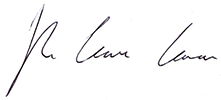Do you remember earlier this month when Credit Suisse was accused of a liquidity crisis?
If you missed it, my colleague Ryan Dinse covered it pretty well in this article.
Essentially, the famous investment bank came out of the blue with a message of reassurance. They wanted to squash some apparent social media noise that problems were growing behind the scenes.
A lot of the media seemingly lapped it up.
Here are two of my personal favourite headlines from ex-Washington Post and Financial Times reporter Paul Davies:
|
|
| Source: Bloomberg |
The first title is from 4 October, and the second came just three days later, on 7 October. And while Davies was certainly the most vocal advocate for Credit Suisse, he wasn’t alone.
Many media outlets blamed anything and everything but the bank. And I’m sure they felt justified in doing so as the story seemingly went away.
Or at least they thought it did…
If it looks like a duck
Yesterday, Credit Suisse finally confirmed what was plainly obvious for anyone without bias to see.
A legitimate bank run is occurring, and management has been scrambling to get it under control. Even now, while they state that outflows have eased, they haven’t stopped. Depositors are fleeing this sinking ship before it truly does turn into the next ‘Lehman moment’.
Here is the bank’s own admission:
‘These outflows have partially utilized liquidity buffers at the group level and legal entity level, and we have fallen below certain legal entity-level regulatory requirements.’
Don’t for a second believe that the bank is accepting responsibility for the crisis, though. No, they still blame the negative social media and press coverage. To be honest, that is almost more damning. Because as an article in ZeroHedge bluntly quips:
‘Sorry, bank, but if all it takes for your liquidity to fall below legal regulatory requirements are a few tweets, then you probably shouldn’t exist in the first place.’
That’s why Credit Suisse is undertaking a ‘radical’ restructure. 9,000 jobs will be cut by 2025, many of which will be gone before this year is over. US$1.5 billion has been secured from the Saudi National Bank. This is despite Credit Suisse’s supposed concerns over the Saudis’ involvement in killing Jamal Khashoggi.
But you know, outrage doesn’t keep a bank in business — money does. It’s just another example of the rampant hypocrisy you’ll find among these banking vultures.
In times like these, especially in the thick of a bear market, you can’t afford to take anything at face value. Scepticism may not always be warranted, but ignorance will cost you far more.
Sign of the times
Of course, the collapse of Credit Suisse is merely a sideshow to some far bigger concerns. European stability as a whole is still not certain.
If we’re talking about global matters, then the biggest topic of them all continues to be energy. Because while banking is important, money supply and demand won’t matter in a world where energy is too expensive for everyday people.
That sounds extreme, I know, but it is a real threat that my colleague Greg Canavan has been covering extensively. He continues to identify and warn his readers about the looming crisis in oil prices and supply.
You can read all about Greg’s outlook in his comprehensive research report right here.
Even if you’re not big on energy investments or have high hopes for renewable innovation like I do, it is still worth listening to what he has to say. Because as 2022 has proven, energy is the biggest issue facing everyone right now.
In Greg’s own words:
‘You cannot conjure up results simply because idealistic politicians, activists, and bureaucrats wish it so.
‘We’ll learn this the hard way.’
Credit Suisse and its many investors have just been taught this harsh lesson.
Make sure you don’t have to learn the hard way as well…
Regards,
 |
Ryan Clarkson-Ledward,
Editor, Money Morning
Ryan is also co-editor of Exponential Stock Investor, a stock tipping newsletter that hunts down promising small-cap stocks. For information on how to subscribe and see what Ryan’s telling subscribers right now, click here.


